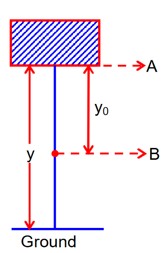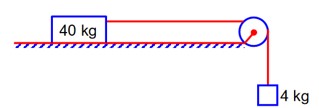Physics
Get insights from 5.6k questions on Physics, answered by students, alumni, and experts. You may also ask and answer any question you like about Physics
Follow Ask QuestionQuestions
Discussions
Active Users
Followers
New answer posted
2 months agoContributor-Level 10
Since velocity does not change, so acceleration will be zero.
mg = FB + Fv
New answer posted
2 months agoContributor-Level 10
Least count of Vernier = 0.1mm
Reading of Vernier Scale = 5 * 0.1 = 0.5mm
The corrected diameter of sphere = Main Scale Reading + Vernier Scale reading + Zero correction = 1.7 + 0.05 + 0.05 = 1.8cm = 180 * 10-2 cm.
New answer posted
2 months agoNew answer posted
2 months agoContributor-Level 10
According to Newton's law of motion, we can write
ma = mg – N = mg -
New answer posted
2 months agoContributor-Level 10
According to conservation of energy, we can write
Gain in kinetic energy = Loss in potential energy
=>Kf – Kin = Uin - Uf
=>K - = mgy – mg (y – y0) = mgy0
New answer posted
2 months agoContributor-Level 10
According to Newton's laws of motion, we can write
4a = 4g – T . (1), and
40a = T - fk = T -
![]()
Adding equations (1) and (2), we can write
44a = 40 – 0.02 * (400) = 32
New answer posted
2 months agoContributor-Level 9
In non-polar molecules, centre of +ve charge coincides with centre of –ve charge, Hence, net dipole moment becomes zero.
When non-polar material is placed in external field, centre of charge does not coincide, hence give non-zero moment.
Taking an Exam? Selecting a College?
Get authentic answers from experts, students and alumni that you won't find anywhere else
Sign Up on ShikshaOn Shiksha, get access to
- 65k Colleges
- 1.2k Exams
- 679k Reviews
- 1800k Answers


